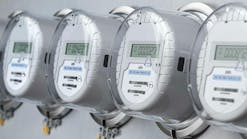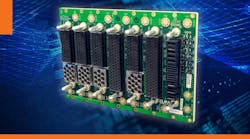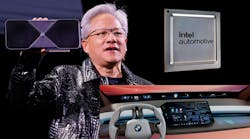In many ways, the internet has become a form of “hard drive” for the masses. It’s a place to store and find a seemingly unlimited amount of information as needed. The internet can be accessed from almost anywhere, with wired or wireless communications devices such as cellular telephones and WLAN laptop computers. But it’s not just people connecting to each other via the Internet: Billions of things, as in Internet of Things (IoT) devices, also hook up with the internet—a number that’s expected to grow dramatically in the next few years.
Recent market forecasts by organizations such as Gartner estimate more than 20 billion worldwide IoT devices by 2020. While these IoT devices will occupy some of that seemingly unlimited memory storage capacity available from the many computers comprising the internet, they will also support numerous functions in homes, factories, even outdoors.
Many IoT devices are designed to make environments “smarter,” including motor vehicles, homes, offices, and cities. While some may argue that the only “smart” cities will be those without IoT devices, the rise in applications of IoT technology is apparently unavoidable and will no doubt become relatively mundane with time. For example, users can check the temperature of the rooms in their homes while still at work by gaining remote access to the internet via cellphone.
Growing interest in IoT devices is evidence of how the wireless/cellular telephone has evolved into a “control center” for many users. The wireless/cellular telephone is not only an information center, it serves as a remote control for IoT devices.
The basic concept of a “smart home” is a residence in which electronic devices such as light switches, thermostats, radios, and televisions are connected to the internet and can be controlled by voice commands as a user walks through, or remotely by having a wireless/cellular telephone or “smartphone” function as a wireless remote control. The IoT devices are also sensors that can gather and exchange data, thus enabling, say, room temperatures to be adjusted according to occupancy to save on heating bills, or perform other dynamic actions for efficiency and economy.
Although many well-known professional organizations such as AT&T Business and IBM with its IBM Watson IoT service can organize a “smart business” with appropriate IoT devices, the majority of IoT users learn as they go with the technology. This typically involves a close-range wireless communications technology, such as Bluetooth or Wi-Fi, to connect IoT devices to a local wireless network for access by a user’s cellphone. The phone would be equipped with appropriate application software to control the IoT devices.
The worldwide use of the interconnected computer servers that form the internet has grown into a massive global network known simply as “the cloud.” In turn, IoT devices connected to any network with internet capability can be accessed by any communications device with similar access to the internet.








